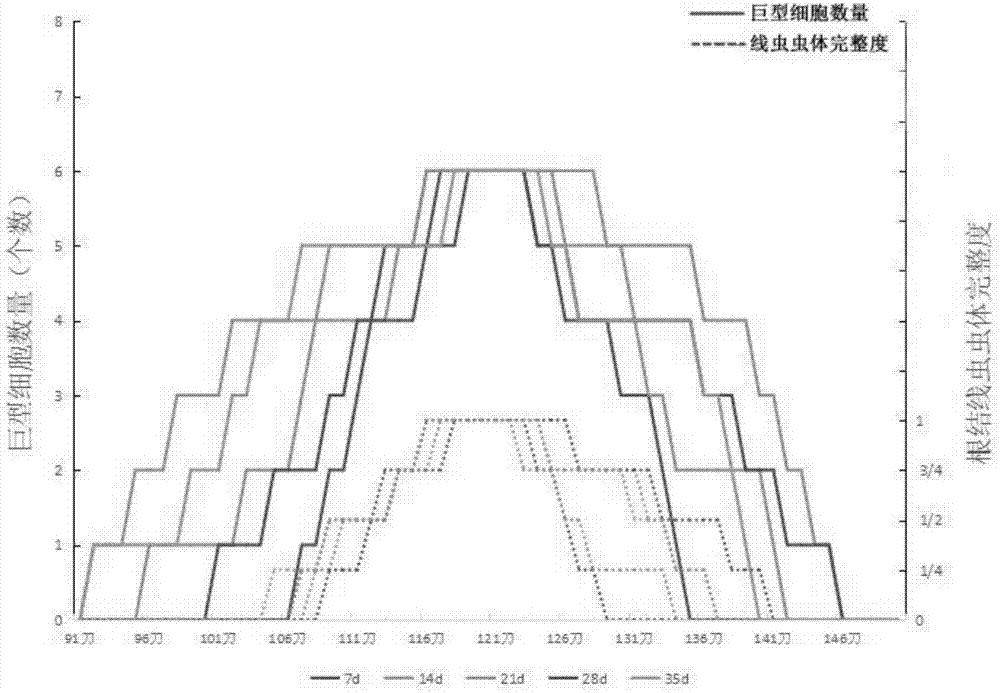Method for effectively observing tomato root knot giant cell paraffin section
A technique of paraffin sectioning and root-knot, which is applied in measuring devices, material analysis through optical means, instruments, etc., can solve the problems that can not be fully applied to tomato root-knot giant cell tissue section, tomato root-knot nematode deformation, early giant cell Missing inclusions, etc.
- Summary
- Abstract
- Description
- Claims
- Application Information
AI Technical Summary
Problems solved by technology
Method used
Image
Examples
Embodiment 1
[0062] A method for effectively observing tomato root-knot giant cell paraffin sections, comprising the steps of:
[0063] S1: After inoculation, wash the soil at the root of the tomato under running water for 5 minutes, collect the root knots with one side swelling and an infection angle of 40-60°, and store them in FAA fixative solution (note: collect the root knots of plants) When knotting, cut the two ends of the root knot into 0.3 cm at the upper end and 0.7 cm at the lower end according to the growth direction of the plant root tissue);
[0064] S2: Prepare a 10ml medical syringe, press the needle socket with your fingers, put the collected root knots into the syringe, pour 8ml of FAA fixative, insert the needle and the syringe with the needle pointing up, push and pull repeatedly until Observe that no air bubbles are produced in the fixative, at this time the air in the root knot has been drawn out;
[0065] S3: After vacuuming, put the root knot into a glass fixative bo...
Embodiment 2
[0085] Implementation Example 2: Obtaining the serial numbers of the best slices of tomato root knots at different days of infection.
[0086] This implementation example follows the method described in Example 1, specifically to obtain the best slice serial numbers of tomato root knots at different days of infection.
[0087] This embodiment is based on the steps of Example 1, collecting 7d, 14d, 21d, 28d and 35d tomato root knots, and making slices. 6 valid root knots were taken for each day and sectioned, and the Nikon ECLIPSE TS100 inverted microscope was used to take photos and record the whole process of giant cells and root-knot nematodes in tomato roots from production to disappearance, and giant cells appeared in each slice of the 6 valid root knots. The number of cells and the integrity of the insect body were observed and counted. The results of the implementation example show that: each root knot is cut about 220 cuts in total, of which 1 to 90 cuts in 220 cuts to...
PUM
 Login to View More
Login to View More Abstract
Description
Claims
Application Information
 Login to View More
Login to View More - Generate Ideas
- Intellectual Property
- Life Sciences
- Materials
- Tech Scout
- Unparalleled Data Quality
- Higher Quality Content
- 60% Fewer Hallucinations
Browse by: Latest US Patents, China's latest patents, Technical Efficacy Thesaurus, Application Domain, Technology Topic, Popular Technical Reports.
© 2025 PatSnap. All rights reserved.Legal|Privacy policy|Modern Slavery Act Transparency Statement|Sitemap|About US| Contact US: help@patsnap.com



